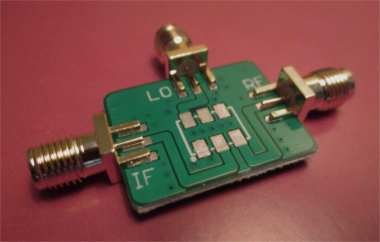What Are RF Mixers?
With the rapid development of wireless communications, radar, satellite communications, and the Internet of Things (IoT), RF mixers have become a crucial component in electronic systems for frequency conversion. Whether it's upconversion and downconversion in cellular base stations or frequency processing in radar signals, mixers play an indispensable role. This article will provide a detailed introduction to this key component, covering its definition, working principle, types, characteristics and advantages, applications, and more.

I. What Are RF Mixers?
An RF mixer, also known as a frequency mixer, is an active or passive circuit with three ports: the RF input, the local oscillator (LO) input, and the intermediate frequency (IF) output. Its main function is to multiply or switch two electromagnetic signals of different frequencies using nonlinear devices, thereby generating sum (RF + LO) and difference (|RF – LO|) frequency components. The primary goal is to convert frequencies while preserving the phase and amplitude characteristics of the signal as much as possible.
II. Working Principle
At the heart of the mixer is a nonlinear element—such as a diode or a field-effect transistor (FET)—that performs the multiplication of the two input signals. Specifically, when the RF and LO signals combine and pass through this nonlinear device, the output contains the original frequencies, as well as their sum and difference frequencies. A filtering circuit then selects the desired frequency component to achieve frequency conversion.In addition, switching-type mixers use the LO signal to drive switching elements, enabling periodic sampling and spectral inversion of the signal. These are often employed in applications requiring high linearity and isolation.
Get more details: What Are RF Mixers?